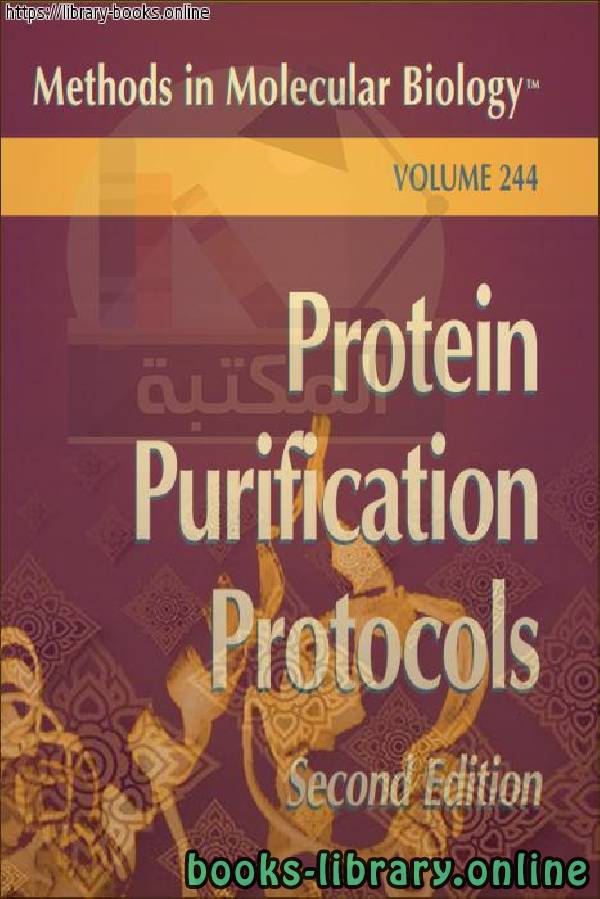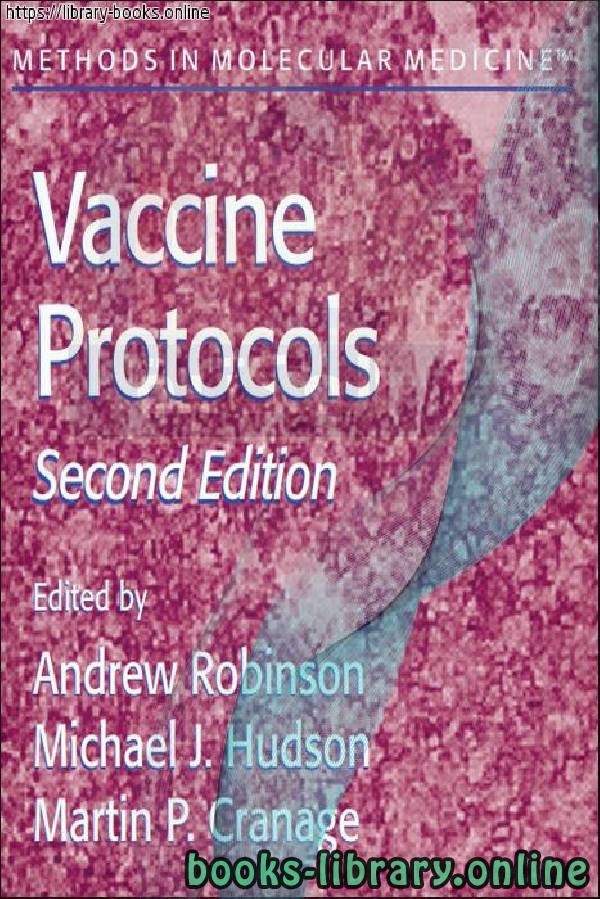كتاب Protein Purification Protocols
نبذه عن الكتاب: General Strategies Shawn Doonan and Paul Cutler 1. Defining the Problem The chapters that follow in this volume give detailed instructions on how to use the various methods that are available for purification of proteins. The question arises, however, of which of these methods to use and in which order to use them to achieve purification in any particular case; that is, the purification problem must be clearly defined. What follows outlines the sorts of question that need to be asked as part of that definition and how the answers affect the approach that might be taken to developing a purification schedule. It should be noted here that the discussion concentrates mainly on laboratory-scale isolation of proteins. Special cases of purification of therapeutic proteins and isolation at industrial scale are covered in Chapters 43 and 44 (1–5). 1.1. How Much Do I Need? The answer to this question depends on the purpose for which the protein is required. For example, to carry out a full chemical and physical analysis of a protein may require several hundreds of milligrams of purified material, whereas a kinetic analysis of the reaction catalyzed by an enzyme could perhaps be done with a few milligrams and less than 1 mg would be required to raise a polyclonal antibody. At the extreme end of the scale, if the objective is to obtain limited sequence information from the N-terminus of a protein as a preliminary to the design of an oligonucleotide probe for clone screening, then using modern microsequencing techniques, a few micrograms will be sufficient. In the field of proteomics, previously analytical techniques have become preparative with mass spectrometry commonplace for sensitive protein characterization from spots on gels. Chapters 36 and 40–42 describe these methodologies. These different requirements for quantity may well dictate the source of the protein chosen (see Subheading 1.4.) and will certainly influence the approach to purification. Purification of large quantities of protein requires use of techniques, at least in the early stages, that have a high capacity but low resolving power, such as fractional precipitation with salt or organic solvents (see Chapter 13). Process only when the volume and protein content of the extract has been reduced to manageable levels, methods of medium resolution and capacity, such as ion-exchange chromatography (see Chapter 14) can be used leading on, if necessary, to high-resolutionPaul Cutler - ❰ له مجموعة من الإنجازات والمؤلفات أبرزها ❞ Protein Purification Protocols ❝ ❱
من Biology Books علم الأحياء - مكتبة الكتب العلمية.

قراءة كتاب Protein Purification Protocols أونلاين
معلومات عن كتاب Protein Purification Protocols:
General Strategies
Shawn Doonan and Paul Cutler
1. Defining the Problem
The chapters that follow in this volume give detailed instructions on how to use the
various methods that are available for purification of proteins. The question arises, however, of which of these methods to use and in which order to use them to achieve purification in any particular case; that is, the purification problem must be clearly defined.
What follows outlines the sorts of question that need to be asked as part of that definition and how the answers affect the approach that might be taken to developing a purification schedule. It should be noted here that the discussion concentrates mainly on
laboratory-scale isolation of proteins. Special cases of purification of therapeutic proteins and isolation at industrial scale are covered in Chapters 43 and 44 (1–5).
1.1. How Much Do I Need?
The answer to this question depends on the purpose for which the protein is required.
For example, to carry out a full chemical and physical analysis of a protein may require
several hundreds of milligrams of purified material, whereas a kinetic analysis of the reaction catalyzed by an enzyme could perhaps be done with a few milligrams and less than
1 mg would be required to raise a polyclonal antibody. At the extreme end of the scale, if
the objective is to obtain limited sequence information from the N-terminus of a protein
as a preliminary to the design of an oligonucleotide probe for clone screening, then using
modern microsequencing techniques, a few micrograms will be sufficient. In the field of
proteomics, previously analytical techniques have become preparative with mass spectrometry commonplace for sensitive protein characterization from spots on gels. Chapters 36 and 40–42 describe these methodologies. These different requirements for quantity may well dictate the source of the protein chosen (see Subheading 1.4.) and will
certainly influence the approach to purification. Purification of large quantities of protein
requires use of techniques, at least in the early stages, that have a high capacity but low
resolving power, such as fractional precipitation with salt or organic solvents (see Chapter 13). Process only when the volume and protein content of the extract has been reduced
to manageable levels, methods of medium resolution and capacity, such as ion-exchange
chromatography (see Chapter 14) can be used leading on, if necessary, to high-resolution
سنة النشر : 2003م / 1424هـ .
عدد مرات التحميل : 3882 مرّة / مرات.
تم اضافته في : الأحد , 26 يناير 2020م.
حجم الكتاب عند التحميل : 3.680 .
تعليقات ومناقشات حول الكتاب:
Biologically
Biology is a natural science that is concerned with the study of life, its various forms and its function, how these organisms interact with each other and with the surrounding environment. The word biology in Greek is made up of two words: bio (βίος) meaning life. And loggia (-λογία) means science or study. Biology: the similarity of vegetation and animal cover on the edges of the African and American states, and the existence of the same fossil.
Branches of biology
Biology is an ancient science thousands of years old and modern biology began in the nineteenth century. This science has multiple branches. Among them are:
Anatomy
Botany
Biochemia
Biogeography
Biofisia
Cytology or cell science
Ecology or environmental science
نبذه عن الكتاب:
General Strategies
Shawn Doonan and Paul Cutler
1. Defining the Problem
The chapters that follow in this volume give detailed instructions on how to use the
various methods that are available for purification of proteins. The question arises, however, of which of these methods to use and in which order to use them to achieve purification in any particular case; that is, the purification problem must be clearly defined.
What follows outlines the sorts of question that need to be asked as part of that definition and how the answers affect the approach that might be taken to developing a purification schedule. It should be noted here that the discussion concentrates mainly on
laboratory-scale isolation of proteins. Special cases of purification of therapeutic proteins and isolation at industrial scale are covered in Chapters 43 and 44 (1–5).
1.1. How Much Do I Need?
The answer to this question depends on the purpose for which the protein is required.
For example, to carry out a full chemical and physical analysis of a protein may require
several hundreds of milligrams of purified material, whereas a kinetic analysis of the reaction catalyzed by an enzyme could perhaps be done with a few milligrams and less than
1 mg would be required to raise a polyclonal antibody. At the extreme end of the scale, if
the objective is to obtain limited sequence information from the N-terminus of a protein
as a preliminary to the design of an oligonucleotide probe for clone screening, then using
modern microsequencing techniques, a few micrograms will be sufficient. In the field of
proteomics, previously analytical techniques have become preparative with mass spectrometry commonplace for sensitive protein characterization from spots on gels. Chapters 36 and 40–42 describe these methodologies. These different requirements for quantity may well dictate the source of the protein chosen (see Subheading 1.4.) and will
certainly influence the approach to purification. Purification of large quantities of protein
requires use of techniques, at least in the early stages, that have a high capacity but low
resolving power, such as fractional precipitation with salt or organic solvents (see Chapter 13). Process only when the volume and protein content of the extract has been reduced
to manageable levels, methods of medium resolution and capacity, such as ion-exchange
chromatography (see Chapter 14) can be used leading on, if necessary, to high-resolution
Biology
Human biology
Who is the founder of biology?
The importance of biology
Areas of work in the field of biology
Theories of biology
Research on biology for the first grade of secondary school
Human biology
 مهلاً !
مهلاً !قبل تحميل الكتاب .. يجب ان يتوفر لديكم برنامج تشغيل وقراءة ملفات pdf
يمكن تحميلة من هنا 'تحميل البرنامج'

نوع الكتاب : pdf.
اذا اعجبك الكتاب فضلاً اضغط على أعجبني و يمكنك تحميله من هنا:


كتب اخرى في Biology Books
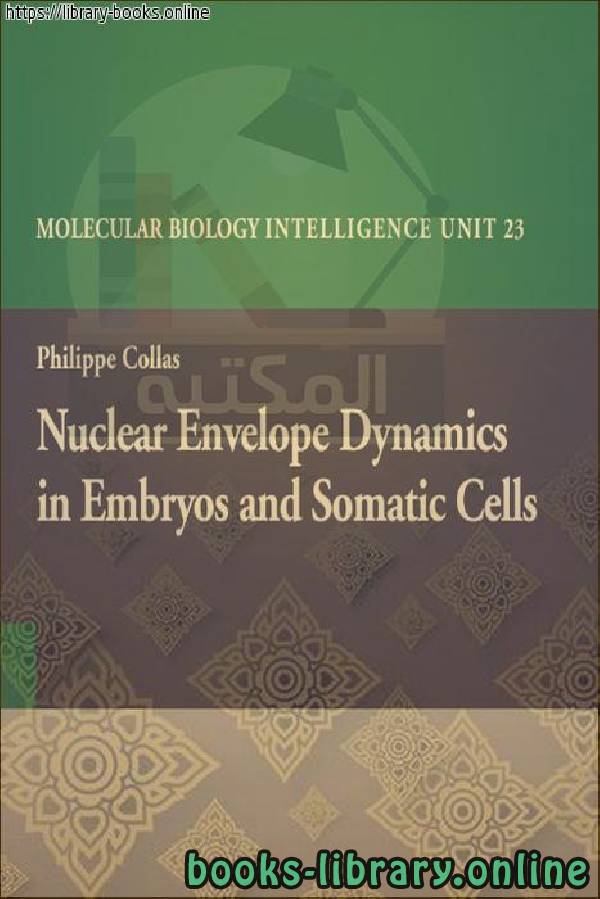
Nuclear Envelope Dynamics in Embryos and Somatic Cells-Land Nuclear Envelope Dynamics in Embryos and Somatic Cells-Landes Bioscience_Eurekahes Bioscience_Eurekah PDF
قراءة و تحميل كتاب Nuclear Envelope Dynamics in Embryos and Somatic Cells-Land Nuclear Envelope Dynamics in Embryos and Somatic Cells-Landes Bioscience_Eurekahes Bioscience_Eurekah PDF مجانا
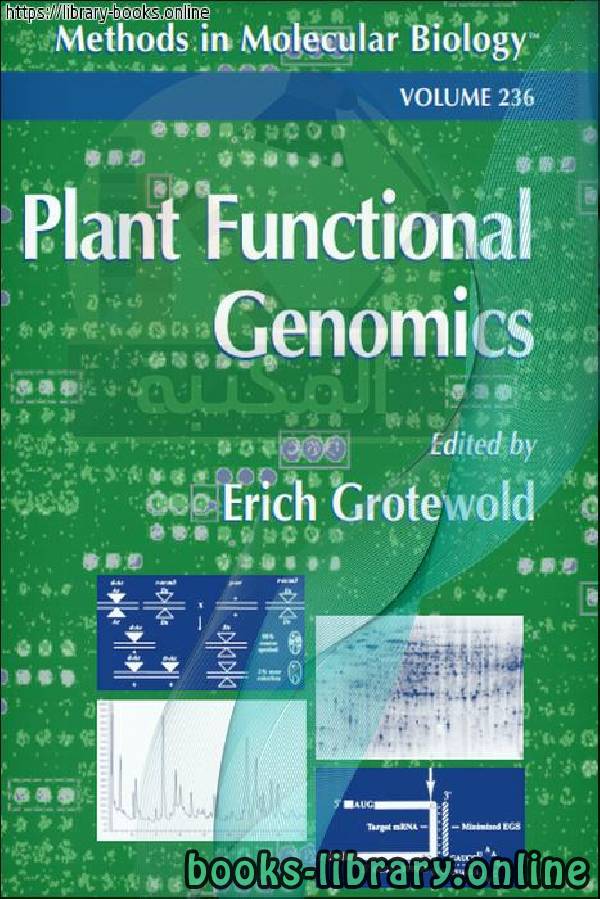
Plant Functional Genomics. Methods and Protocols PDF
قراءة و تحميل كتاب Plant Functional Genomics. Methods and Protocols PDF مجانا

Glossary of Molecular Biology Terminology PDF
قراءة و تحميل كتاب Glossary of Molecular Biology Terminology PDF مجانا
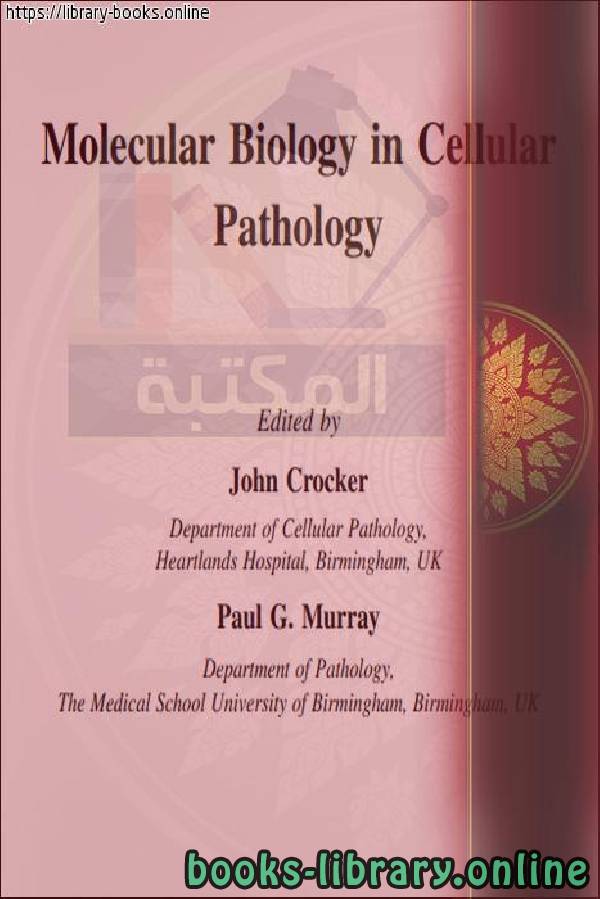
Molecular Biology in Cellular Pathology PDF
قراءة و تحميل كتاب Molecular Biology in Cellular Pathology PDF مجانا
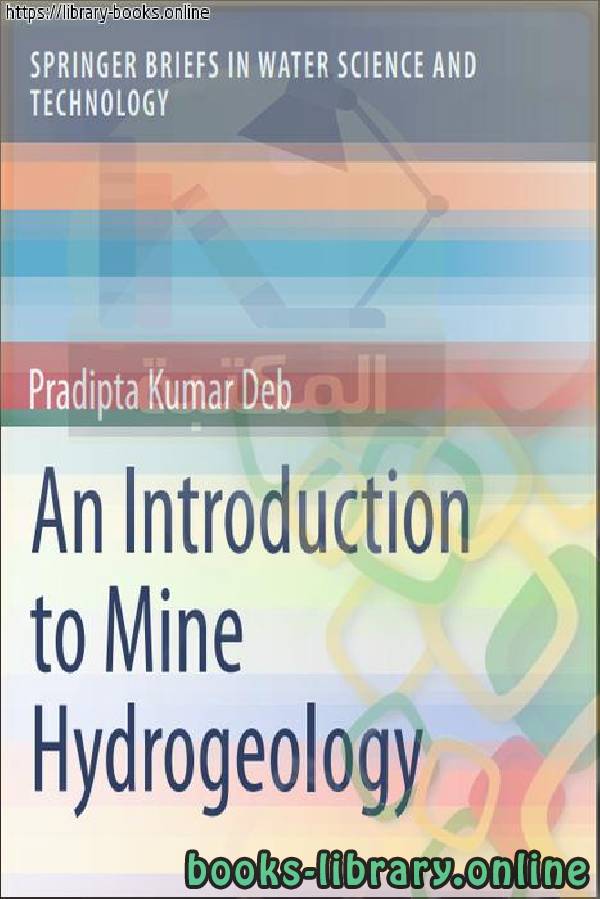
An Introduction to Mine Hydrogeology PDF
قراءة و تحميل كتاب An Introduction to Mine Hydrogeology PDF مجانا
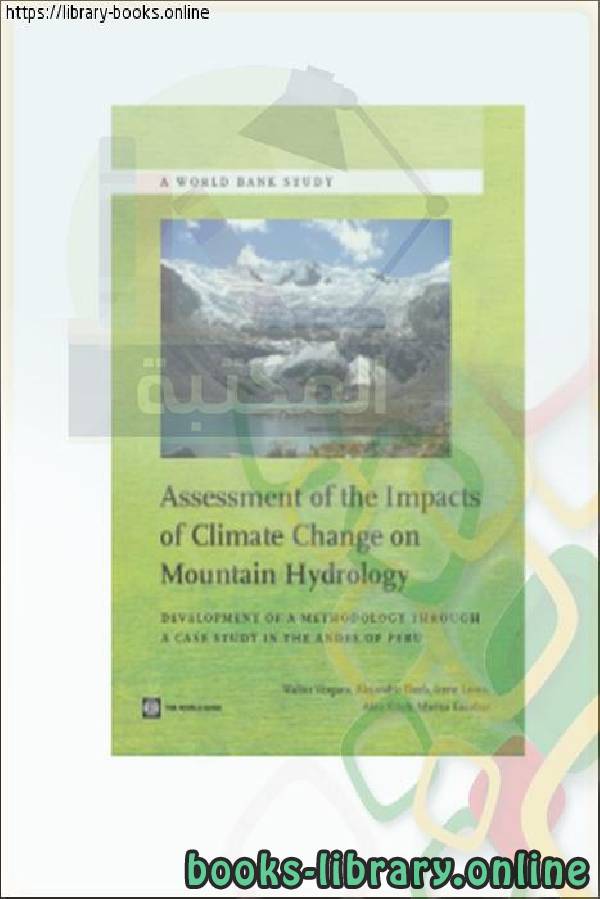
Assessment of the Impacts of Climate Change on Mountain Hydrology PDF
قراءة و تحميل كتاب Assessment of the Impacts of Climate Change on Mountain Hydrology PDF مجانا

Case Studies in Earthquake and Geotechnical Engineering PDF
قراءة و تحميل كتاب Case Studies in Earthquake and Geotechnical Engineering PDF مجانا
